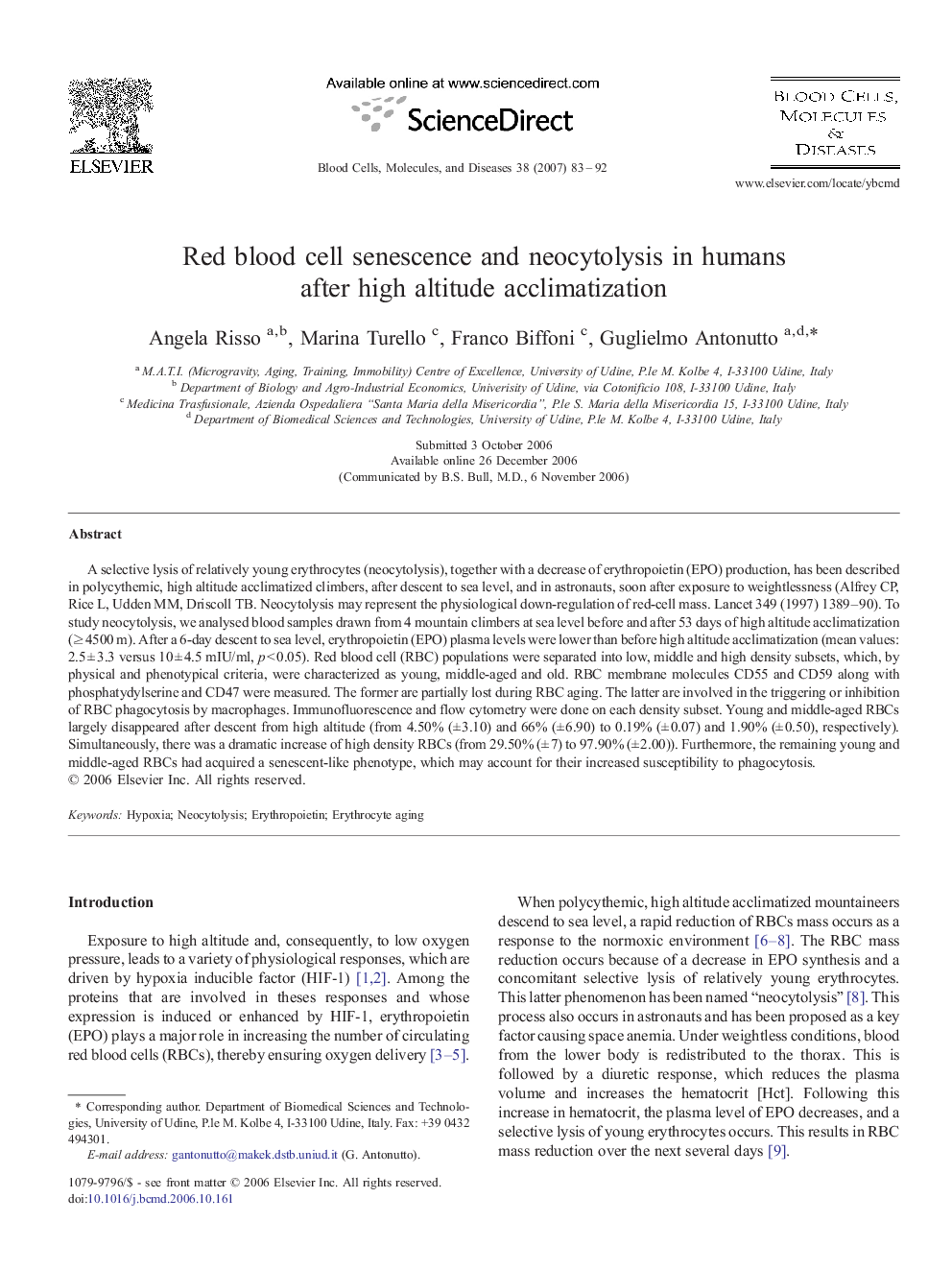| Article ID | Journal | Published Year | Pages | File Type |
|---|---|---|---|---|
| 2828139 | Blood Cells, Molecules, and Diseases | 2007 | 10 Pages |
A selective lysis of relatively young erythrocytes (neocytolysis), together with a decrease of erythropoietin (EPO) production, has been described in polycythemic, high altitude acclimatized climbers, after descent to sea level, and in astronauts, soon after exposure to weightlessness (Alfrey CP, Rice L, Udden MM, Driscoll TB. Neocytolysis may represent the physiological down-regulation of red-cell mass. Lancet 349 (1997) 1389–90). To study neocytolysis, we analysed blood samples drawn from 4 mountain climbers at sea level before and after 53 days of high altitude acclimatization (≥ 4500 m). After a 6-day descent to sea level, erythropoietin (EPO) plasma levels were lower than before high altitude acclimatization (mean values: 2.5 ± 3.3 versus 10 ± 4.5 mIU/ml, p < 0.05). Red blood cell (RBC) populations were separated into low, middle and high density subsets, which, by physical and phenotypical criteria, were characterized as young, middle-aged and old. RBC membrane molecules CD55 and CD59 along with phosphatydylserine and CD47 were measured. The former are partially lost during RBC aging. The latter are involved in the triggering or inhibition of RBC phagocytosis by macrophages. Immunofluorescence and flow cytometry were done on each density subset. Young and middle-aged RBCs largely disappeared after descent from high altitude (from 4.50% (± 3.10) and 66% (± 6.90) to 0.19% (± 0.07) and 1.90% (± 0.50), respectively). Simultaneously, there was a dramatic increase of high density RBCs (from 29.50% (± 7) to 97.90% (± 2.00)). Furthermore, the remaining young and middle-aged RBCs had acquired a senescent-like phenotype, which may account for their increased susceptibility to phagocytosis.
